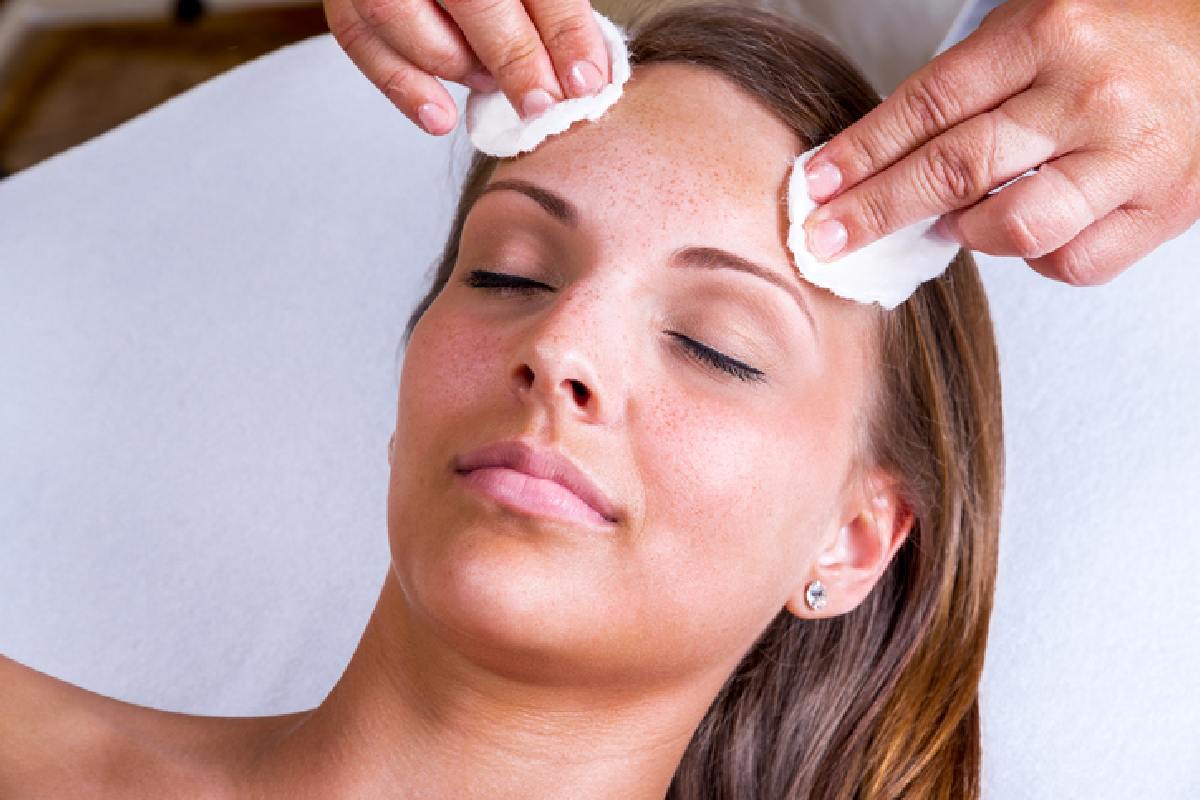Table of Contents
Chemical Peels for Oily and Acne-Prone Skin
Struggling with oily and acne-prone skin can be both frustrating and disheartening. Constant breakouts, excess shine, and blemishes can affect not only your presence but also your self-confidence. While there are various skincare products available, sometimes you need a more potent solution. This is where chemical peels come into play. In this comprehensive guide, we’ll dive into the world of chemical peels, exploring their benefits for oily and acne-prone skin and shedding light on how they can help you achieve a clearer, more radiant complexion.
Understanding Chemical Peels
Before delving into the specific benefits of chemical peels for oily and acne-prone skin, it’s essential to understand what chemical peels are and how they work.
Chemical peels are skincare treatments that involve the application of a chemical solution to the skin. These solutions contain various acids, such as , salicylic acid, lactic acid and glycolic acid, which are known for their exfoliating properties. The acids work by removing the top layer of the skin, prompting the skin to regenerate and reveal a fresher, healthier layer beneath.
The Benefits of Chemical Peels for Oily and Acne-Prone Skin
Now, let’s explore how chemical peels can specifically benefit individuals with oily and acne-prone skin:
- Exfoliation: Chemical peels provide a deeper and more controlled exfoliation compared to over-the-counter products. By removing dead , excess oil, skin cells, and debris from the skin’s surface, they help unclog pores and prevent the formation of new blemishes.
- Reduction of Excess Oil: Oily skin is often associated with enlarged pores and excessive oil production. Chemical peels can help regulate oil production, resulting in a more balanced complexion with reduced shine.
- Acne Scarring: Chemical peels can improve the appearance of acne scars and hyperpigmentation. By promoting collagen production and skin cell turnover, they gradually fade scars, leaving smoother, more even-toned skin.
- Acne Breakouts: Chemical peels can be effective in reducing the frequency and severity of acne breakouts. They help prevent clogged pores, which are a common precursor to acne.
- Blackheads and Whiteheads: Chemical peels are effective in removing blackheads and whiteheads, which can be stubborn and hard to address with topical treatments alone.
- Improved Product Penetration: After a chemical peel, your skin is more receptive to skincare products. This means that the products you apply post-peel are more effective in addressing your specific skin concerns.
- Boosted Confidence: One of the most significant benefits of chemical peels is the boost in self-confidence that comes with clearer, smoother, and more radiant skin.
The Types of Chemical Peels
There are various types of chemical peels, each catering to specific skin concerns. For individuals with oily and acne-prone skin, the following types of chemical peels are commonly recommended:
- Glycolic Acid Peels: Glycolic acid is known for its exfoliating properties. It helps improve the texture of the skin, reduce acne breakouts, and diminish the appearance of fine lines.
- Salicylic Acid Peels: Salicylic acid is highly effective for individuals with acne-prone skin. It penetrates the pores, unclogs them, and reduces inflammation, making it an excellent choice for addressing acne and blackheads.
- Lactic Acid Peels: Lactic acid is milder than some other chemical peel options, making it suitable for those with sensitive skin. It helps exfoliate the skin’s surface, improving texture and hydration.
- TCA (Trichloroacetic Acid) Peels: TCA peels are deeper peels that can effectively address acne scars and hyperpigmentation. They provide more dramatic results but may require a longer recovery period.
- Jessner’s Peels: Jessner’s peels are a combination of salicylic acid, lactic acid, and resorcinol. They are known for their ability to improve skin texture, reduce acne, and address pigmentation issues.
The Treatment Process
Undergoing a chemical peel for oily and acne-prone skin involves a few key steps:
- Consultation: The process begins with a consultation with a skincare professional. During this consultation, your skin type and concerns are assessed, and a customized treatment plan is developed.
- Preparation: Before the peel, you may be advised to use specific skincare products to prepare your skin. This can help enhance the peel’s effectiveness and minimize potential side effects.
- The Peel: The chemical peel solution is applied to your skin by a licensed professional. You may experience a tingling or burning sensation during this process, which typically lasts for a few minutes.
- Recovery: The recovery period depends on the type of chemical peel you receive. Some peels have minimal downtime, while others may require a few days of recovery. During this time, you may experience peeling, redness, and sensitivity.
- Post-Peel Care: Following a chemical peel, it’s essential to follow a skincare regimen recommended by your professional to maximize the results and minimize the risk of complications.
Is a Chemical Peel Right for You?
Whether a chemical peel is suitable for your oily and acne-prone skin should be determined in consultation with a qualified skincare professional. Factors such as your specific skin concerns, skin type, and medical history will be taken into consideration to create a personalized treatment plan.
In conclusion, chemical peels offer an effective and transformative solution for individuals with oily and acne-prone skin. By addressing a range of concerns, from exfoliation and oil control to acne scars and breakouts, chemical peels can help you achieve the clear, radiant complexion you’ve been striving for. If you’re ready to revitalize your skin and boost your confidence, consult with a skincare professional to explore the potential benefits of a chemical peel.

